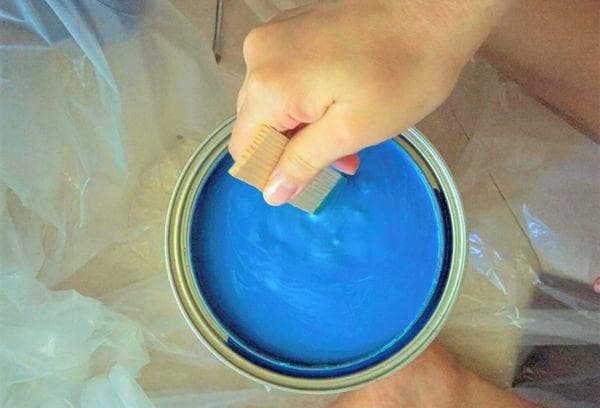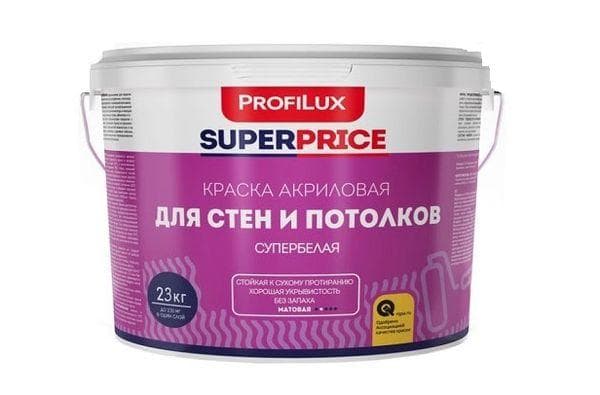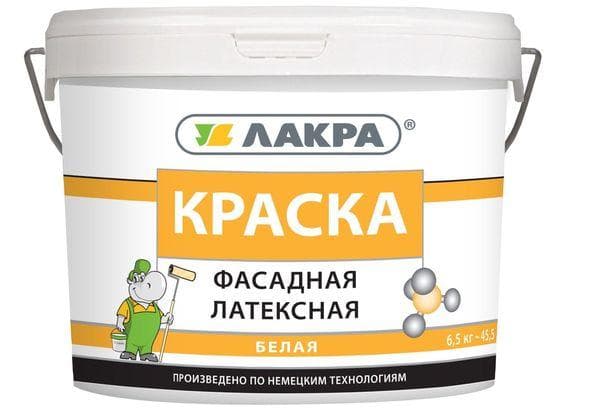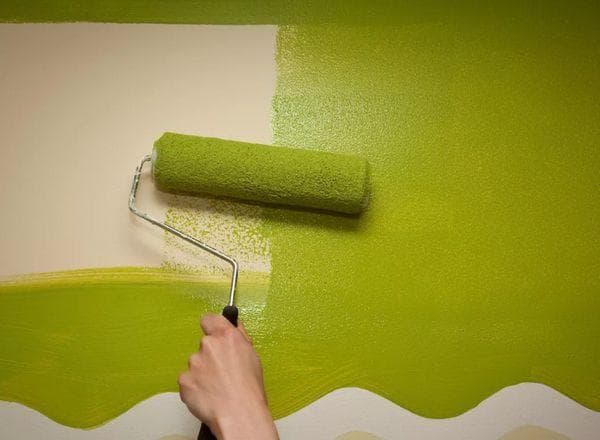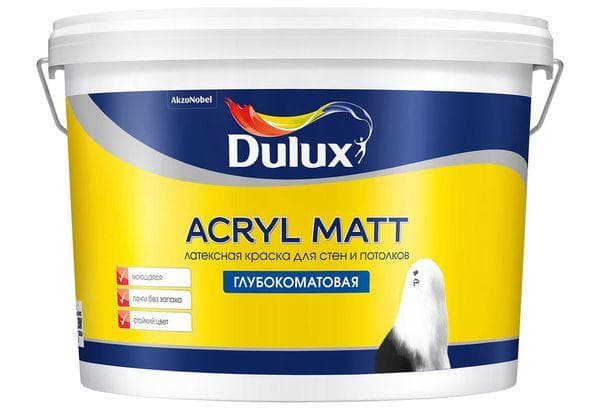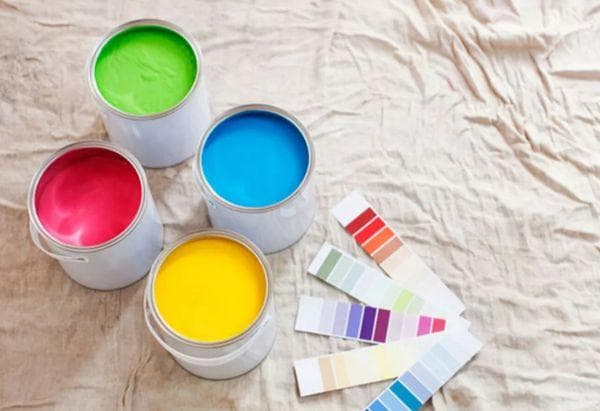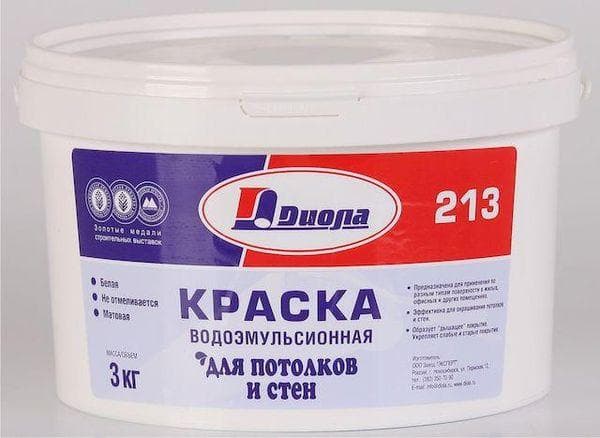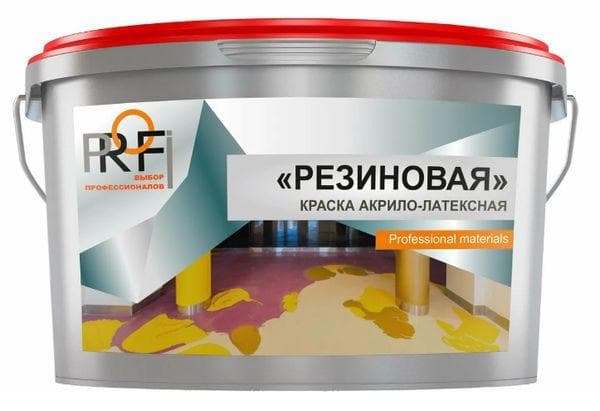Choose acrylic or latex paint for repairs
Content:
The method of finishing using dyeing has been known since ancient times, but is still popular today. If previously coloring compositions based on organic solvents were used everywhere, now water-based dispersion mixtures have become widely used.
Today there are dozens and hundreds of types of water-based paints on sale, differing only in composition and, therefore, different properties. To simplify the choice, they are conditionally divided into latex and acrylic. We can say that, in fact, these compositions are not very different from each other. It would be more correct to call them “acrylic-latex paint”. Before buying, you need to decide for yourself: which paint is better - latex or acrylic.
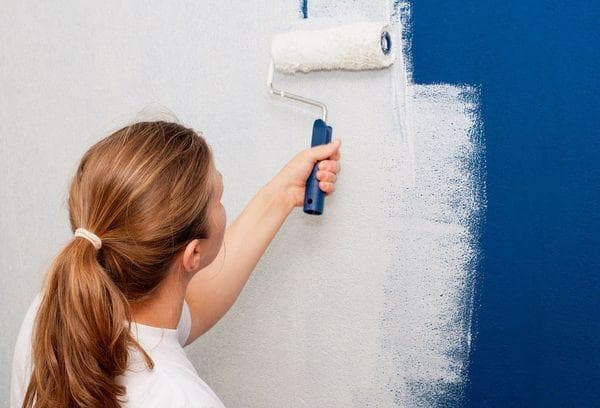
What are latex and acrylic paints made of?
Despite the different names of water-emulsion paints, they have almost the same composition of components, which include:
- Binders (polymers or copolymers, one or several) – particles responsible for adhesion (adhesion of dissimilar surfaces, that is, simply adhesion). Their characteristics increase the durability of the paint layer, abrasion resistance and other physical and mechanical properties;
- Solvent – a liquid (usually water) that combines all components and determines the structure of the mixture;
- Colors or colored pigments – substances that set the desired shade of the coloring material (more than 200 varieties). Usually it is a powder that does not dissolve in liquid and is suspended;
- Stabilizers – special additives that improve the properties of paint materials, or determine their area of use - for interior or exterior decoration, painting various types of surfaces;
- Fillers – surface-active components that are responsible for the resulting appearance of the dried layer of the mixture: brilliantly glossy, matte or semi-matte. In addition, special additions serve to improve the adhesion of the coloring material to different surfaces and increase the quality and reliability of the material.
The stage of regulating the water-based dispersion composition is quite simple. Microparticles of polymer and color are suspended in the volume of liquid - they do not dissolve and do not stick to each other. Before starting work, the material must be thoroughly mixed until smooth, and then you can begin painting.
In the applied layer, moisture gradually evaporates, thereby reducing the distance between suspended substances.When complete drying occurs, the polymer and pigment microparticles are tightly adhered to each other. Thanks to this, a thin, durable elastic film is formed.
Difference of terms
Natural latex is made from rubber, the sap extracted from the tropical Hevea tree, and in small quantities from the juice of dandelions.
It is clear that with the current scale of use of coloring compositions, natural raw materials would not be enough even to produce 1% of all mixtures.
Therefore, in the production of paint mixtures, chemical substitutes for latex with various polymers are used:
- isoprene;
- urethane;
- butadiene styrene;
- acrylate;
- polyvinyl acetate.
Or translated from English latex is an emulsion of dissolved polymer microparticles in water.
The polymer substance is acrylic, which is more accurately called polyacrylate plastic. There are many varieties of such polymers.
What is acrylic paint
An acrylic coloring material is an emulsion of the smallest particles of acrylic or its derivatives: acrylates, which are dissolved in a liquid.
This type usually includes coloring mixtures, where polymers from the acrylic group predominate as binders. They are more wear-resistant and durable compared to analogues. Manufacturers often note on packages that they contain “100% acrylic.”
Due to their high cost, until recently such compositions were not very popular. But today, with the addition of chemical substitutes for natural rubber and lower costs, they have become widely used. The qualitative parameters and significant characteristics of these coloring mixtures allow them to outperform their analogues.
What is latex paint
Styrene-butadiene dispersed substances as the main binding component of the emulsion are considered to be latex coloring mixtures. Such a base, as a rule, costs less, but does not last very long.
Often on sale you can find coloring materials where two components are combined. That’s what they call it: “Latex acrylic paint.” There can be 2 explanations for this:
- Correct translation of the term "latex" from English.
- The composition contains a mixture of acrylate and butadiene-styrene polymers.
What is the difference?
The essence of all modern water-based painting materials is that they are latex. The different names are due only to the different incoming copolymers. Therefore, when selecting paint, you should carefully read the composition.
Copolymers of the acrylic group are used for the production of paints and varnishes of the same emulsion. Most often, polyacrylates with the addition of artificial rubber serve as binding components in these mixtures.
Latex coloring compositions are made based on styrene-butadiene polymers.
Acrylic and latex mixtures have a lot in common in their composition; their strengths and weaknesses are almost the same. The difference lies in only one important point: styrene-butadiene paints cannot be used for exterior or facade work - they are damaged by UV radiation and low temperatures.
Comparison of operational features
The criteria for coloring compositions from different manufacturing brands are largely different from each other, but in general they can be placed within the following framework. Comparison of the characteristics of the compared coloring materials:
| Characteristic | Acrylic paint | Latex paint |
| Price, rub.per kg) | From 300 to 3000 | From 150 to 3000 |
| Dispersion density (kg/dm3) | 1.70 | 1.30 |
| Covering power | 2nd grade | 2nd grade |
| Abrasion resistance | 1-2 grade | 2-3 grade |
| Degree of grinding of components micron | 20-80 | 20-80 |
| Acid-base pH indicator | 8.0-8.5 | 7.5-8.0 |
| Application temperature (°C) | +5 +30 | +5 +30 |
| Drying time under normal conditions (hours) | 3-5 | 3-5 |
| Consumption when applied in one layer (ml/m2) | From 200 to 250 | From 100 to 200 |
Now in more detail on the main criteria.
Price
Low prices very often play a major role in purchasing, even to the detriment of other criteria. In general, styrene-butadiene-based compounds cost almost half as much as acrylic ones.
Other factors also influence the final cost of the product:
- reputation of the manufacturer;
- quantity and type of incoming components.
Currently, these types of paint mixtures are increasingly being mixed to reduce the final cost of repair work.
Durability
Subject to optimal operating conditions, both oxidizing materials have approximately equal performance - 20 years each. In reality, acrylic dyes last longer, since latex mixtures fade from sunlight and do not tolerate high humidity well.
Wear resistance
Both mixtures can be grade 1 - 3. Here they are completely equal. This is good data from the existing 5 classes of division of all types of coloring compositions.
Covering power
Using this indicator, you can determine how transparent the layer of applied paint will become, that is, whether it is able to completely cover the original tone of the product being painted. The characteristic is assessed in classes: from 1 to 5. The higher it is, the less mixture will be spent. The compared compositions are mainly of class 2. Here they are also in equal positions.
Consumption (kg/m2)
When painting, the resulting film can have different thicknesses. This depends on the firmness and elasticity of the paint and varnish mixture: the higher its performance, the less mixture is spent per square meter. For acrylic coloring materials they range from 0.2 to 0.25 kg/m2, for latex – 0.15-0.2 kg/m2.
Versatility
According to this characteristic, acrylate dyes have undeniable advantages, because latex dyes cannot be used for work outside and in wet areas.
Moisture resistance and fade resistance
These criteria also divide the compared compositions into different levels, placing acrylic painting materials higher, since they are not afraid of high humidity and are not afraid of sunlight.
Advantages and disadvantages
Since the paints being compared belong to the same type of water-based mixtures, their main strengths and weaknesses are similar. But there are still some differences.
Latex paints
Water-based mixtures with styrene-butadiene dispersed phase have many positive qualities:
- Low cost among all types of water-based coloring compositions;
- Long service life subject to certain operating conditions;
- High level of wear resistance;
- High resistance to moisture, which allows you to wash painted surfaces.
- Good elasticity - one layer of the mixture perfectly hides small defects;
- Lack of noticeable odor during use, which is observed with similar materials;
- Excellent adhesion to all types of products, even porous ones.
The weaknesses of the mixtures include:
- Burnout from ultraviolet rays;
- Poor tolerance to sudden changes in weather conditions and low temperatures. What does not allow the mixture to be used for painting facades;
- Mold and fungi may appear on the painted surface, which requires mandatory preliminary priming with the addition of antiseptic materials.
Attention! Today, latex coloring compositions for external use have appeared on the market, where the amount of the main binder polymer has been reduced.
Acrylic paints
This type of water-based mixtures looks much more attractive to consumers. He has a wide range of strengths:
- Long service life;
- Excellent adhesion to all types of building materials;
- Resistance to fading under the sun;
- Rich range of pigments;
- Cracks do not appear due to temperature changes;
- The addition of specialized fillers allows you to tolerate frosts down to minus 40 - minus 60 degrees;
- Under a layer of paint, the surface “breathes”;
Among the few disadvantages are:
- Higher price compared to latex;
- The presence of an odor during operation, which disappears after the composition dries.
The main parameters by which water-based paint compositions are classified
Water-based coloring materials are divided according to several important characteristics, which include:
- Surface quality of the dried layer. The manufacturer is obliged to indicate what result will be obtained when painting: matte or glossy. Matte and semi-matte options are recommended to be applied to a leveled surface, otherwise all flaws will be noticeable. Glossy shine will cover minor defects. But absolutely glossy mixtures are not recommended for widespread use, since as a result they reflect bright light, which leads to rapid fatigue and pressure on the psycho-emotional state.
- Scope of application: for facade or interior work, covering ceilings, floors or walls.
Types of mixtures
Among the rich variety of water-based compounds, you must first understand what they are and what they can be used for.
Polyvinyl acetate dye
This type of mixture is known to many as an ordinary “water emulsion”. It is produced on the basis of the familiar PVA.
The most obvious advantages of this composition include:
- Affordability.
- No organic solvent.
- No unpleasant fragrance.
- Excellent grip.
The disadvantages include:
- Low resistance to abrasion and washing off by moisture, even after complete drying.
- If you run your hand over a painted surface, marks will remain on it, as if from whitewash.
- Frost intolerance. Over time it may become cracked and peel off from the surface.
Therefore, it is not recommended when working in areas with high humidity. It is best used for finishing ceilings in dry rooms.
Acrylic latex dye
If the composition contains only polymers of the acrylic group, then such a mixture is of higher quality and its service life is increased, and accordingly the price is also increased.
Rubber acrylate-latex mixture
High-tech products that form a thin but very durable, waterproof, elastic film. These mixtures have a very high degree of frost resistance and moisture resistance.
This is achieved using an optimally selected composition:
- The solvent is purified water;
- As an additive - antifreeze;
- The binding component is acrylate latex;
- A substance that accelerates film formation is a coalescent;
- Antibacterial components for protection – fungicides;
- To increase shelf life, use preservatives in sealed containers.
The rubber paint mixture allows air and steam to pass through well due to the microscopic pores that form after the composition dries. It also has anti-slip qualities, so it is perfect for covering porch steps, garden paths, and a swimming pool.
There are also paints with styrene-butadiene latex composition and acrylic-silicone mixtures.
How to choose the right one
First of all, when choosing which paint is best to purchase, you need to decide for what purpose it will be used:
- For finishing ceilings in warm rooms, it is wiser to choose a polyvinyl acetate mixture;
- For smooth walls, matte paints are a priority; glossy compounds are best used for rougher surfaces;
- Acrylic-silicone mixtures are better suited for outdoor work;
- If you are painting wallpaper that is supposed to be washed frequently, it is better to choose latex paint - it is more moisture resistant;
- An important characteristic is the number of abrasion cycles. For indoor work it should not be less than 3 thousand.
- The quality of the paint is affected by the thickening time of the composition - if the mixture thickens slowly, then it is better not to use it for walls, as streaks may form.
Considering the conditions in which the surface to be painted is located and financial capabilities, you can choose either acrylic or latex dye. The main thing is to choose high-quality products from a reliable manufacturer that meet the conditions of finishing work.
